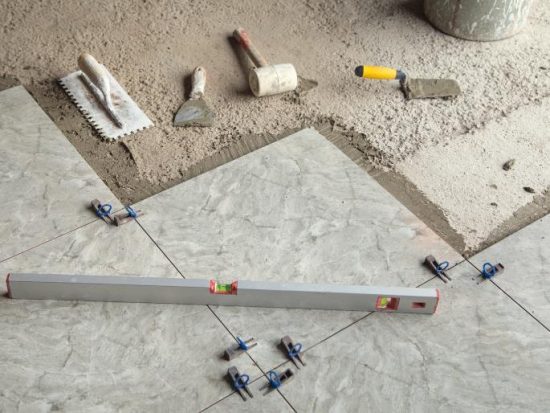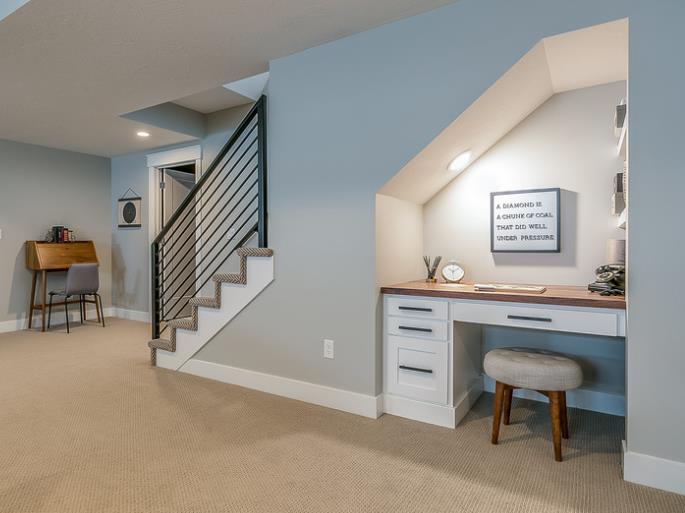By adding finishing touches, your unfinished basement can become a lively and useful living space. The procedure requires careful planning and execution, whether your goal is to add a recreational room, home office, or extra bedroom. In this blog, we’ll review the necessary actions on how to finish a basement, ensuring that every part of the floor, walls, and ceiling is cared for. Making a room that is both livable and welcoming is part of this.
Step by Step Guide on How to Finish the Basement
Initial Considerations Before Starting Your Basement Project
Take care of any moisture or water problems before starting any basement renovations. It is common for basements to get moist, which may lead to finish damage and mold growth. Check to see if the basement is dry. If important, consider installing a sump pump or a dehumidifier.
Furthermore, look for any structural problems. Before you start, these should be fixed. This initial action is necessary to ensure a successful renovation. Check the foundation for any cracks or weak points. To preserve air quality, proper ventilation is also essential. Finally, check the local building codes to ensure all rules are followed.
Preparing the Floor for Renovation

To renovate your basement, you must first prepare the floor. Make sure the surface is nice and level first. If the floor of your basement is concrete, seal any voids. For uneven sections, use concrete filler. After preparing the floor, you can add a subfloor. This layer aids in providing moisture and cold insulation for the basement. It works well in colder climates. Materials like vinyl, tile, or engineered wood are excellent choices for flooring. They provide durability and moisture resistance. Consider installing radiant heating systems beneath the flooring for even more warmth. To prevent moisture from penetrating the concrete, seal it before starting any installations.
Optimizing Wall Insulation and Framing
Concentrating on the walls is the next phase. Installing the proper insulation should come first. This stage is essential to designing a cozy, energy-efficient room. Place fiberglass batts or foam board in between the studs. Install the framing after the insulation. Metal studs work well on basement walls. They are resistant to mold and dampness. Before installing the wallboard, ensure the plumbing and electrical wiring are finished. Select high-value insulation to provide optimal thermal retention. To stop air leaks, seal all joints and crevices. If you want further protection against moisture, think about adding a vapor barrier. Finally, to improve mold and moisture resistance, choose a wallboard that has been specially made for basement circumstances.
Ceiling Solutions for Aesthetics and Functionality
You have plenty of choices when it comes to the ceiling. Choose according to your preferences and needs. A suspended or drop ceiling might be an option for basements with plenty of height. It makes ducting and electrical systems easily accessible. On the other hand, ceilings with drywall offer a more polished appearance. They need more work up front, including insulation and soundproofing. Before choosing, measure the height and requirements of your basement. Installing acoustic tiles on the ceiling will lessen noise transmission if acoustics are an issue. Consider including architectural details like coffers or beams for a more personalized appearance. Paint the ceiling a light hue to help the room feel bigger and brighter. Finally, confirm that any lighting fixtures work with your selected ceiling structure.
Choosing the Right Lighting and Finishes

For a basement, proper lighting is essential. There needs to be more natural light here. One standard option is recessed lighting. It effectively lights the room and doesn’t lower the headroom. Choose paint and materials that are resistant to moisture when choosing finishes. Take into consideration how the area functions. For example, built-in cabinets or shelves might improve storage. Bright colors can give the space a more inviting and energetic feel. Task lighting should also be included in spaces for specific uses, such as crafting or reading. For long-lasting and energy-efficient performance, choose LED bulbs. Provide alternatives that can be dimmed to change the atmosphere as desired. Layer various lighting styles, such as ambient, task, and accent, to create a bright, helpful basement.
Final Touches and Maintenance
It’s time to put the finishing touches after installing the main components. Painting and adding trim may be part of this. Additionally, include the flooring finishes. Verify that all systems and appliances are installed and operating correctly. This covers all water heaters and HVAC parts. Verify again that all the fixtures and fittings are correctly installed and functioning. Consider creating artwork and artistic accents like area rugs to add some flair to the room. Ensure the entire basement is cleaned thoroughly to eliminate any building debris. Lastly, stroll through the area to find any spots requiring touch-ups or final modifications.
Conclusion
Completing a basement successfully takes careful planning and meticulous attention to detail. This unused space can become one of your home’s most cherished rooms with the appropriate attitude. You may guarantee a successful makeover of your basement space by adhering to the specified flooring, walls, and ceiling procedures. Taking on this project will improve your home’s functionality to meet your family’s demands better while raising its value. You can add more personal touches to this new space by embracing inspiring themes or color choices. Furthermore, if you carefully maintain the recently remodeled area, it will continue to look its best for many years to come, protecting your investment.
FAQ: Finishing Your Basement
How much does it typically cost to finish a basement?
The size of the basement, the materials needed, and the job’s difficulty all affect the cost of completing it. Expenses typically vary from $10,000 to $35,000 or more. Obtaining quotations from contractors helps you determine the amount of money needed for your job.
How long does it take to finish a basement?
Depending on the amount of labor involved and the workers’ speed, finishing a basement can take a variety of time frames. After work starts, a cellar may usually be completed in four to eight weeks. Planning and acquiring the required permits, however, may delay the commencement of the job.
Do I want a permit to finish my basement?
Of course yes. Permits are typically needed for building projects involving structural, plumbing, or electrical modifications. To ensure that any work complies with local building codes, it’s crucial to inquire about the particular requirements for your location with your local building authority.
What is the best flooring option for a basement?
Your space’s average moisture levels and demands will determine which flooring is best for your basement. Because they are resilient to moisture and wear and tear, materials like vinyl, tile, and engineered wood are popular choices. If moisture is an issue, steer clear of materials that can be harmed by water, such as carpet and hardwood.
Can finishing a basement add value to my home?
Yes, finishing a basement typically adds value to a home by increasing the usable living space. This can be particularly attractive to interested buyers if you decide to sell your home. However, the exact value of investment can vary based on the quality of the finishes and the overall real estate market in your area.

